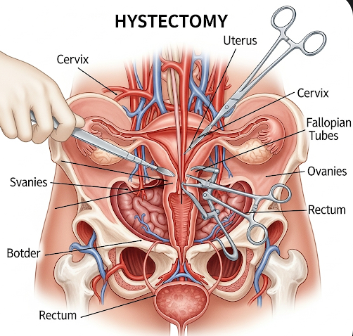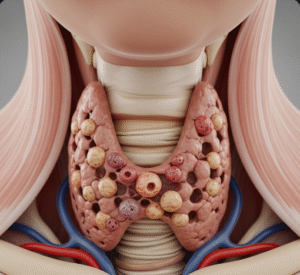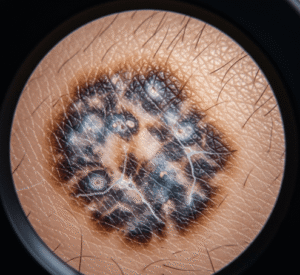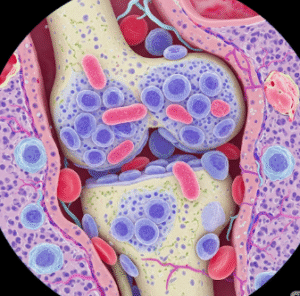Overview
Hysterectomy is a surgical procedure to remove the uterus, often performed to treat conditions such as uterine fibroids, endometriosis, abnormal bleeding, prolapse, or cancer. It can be total (removal of the uterus and cervix) or partial/subtotal (removal of the uterus while leaving the cervix).
South Korea is renowned for its advanced gynecological surgery, minimally invasive techniques, and post-operative care, making it a preferred destination for women seeking hysterectomy with safety, precision, and faster recovery.
What is Hysterectomy?
A hysterectomy involves surgical removal of the uterus, sometimes including other structures depending on the indication:
- Total Hysterectomy → Uterus and cervix removed
- Partial/Subtotal Hysterectomy → Only the uterus removed, cervix preserved
- Radical Hysterectomy → Uterus, cervix, part of the vagina, and surrounding tissues removed, usually for cancer
- Oophorectomy → Removal of ovaries may be done simultaneously
The procedure can be performed through various approaches:
- Abdominal Hysterectomy → Open surgery via lower abdominal incision
- Vaginal Hysterectomy → Removal through the vagina
- Laparoscopic / Robotic-Assisted Hysterectomy → Minimally invasive with small incisions, faster recovery, and reduced pain
What are the Benefits?
- Relief from symptoms such as heavy bleeding, pelvic pain, or prolapse
- Definitive treatment for uterine conditions
- Prevention of recurrence of fibroids or other benign conditions
- Minimally invasive options in Korea → shorter hospital stay and faster recovery
- Improved quality of life for women with chronic uterine issues
- Expert surgical care ensuring safety and optimal outcomes
Procedure Details
1) How should I prepare for Hysterectomy?
- Medical evaluation → Blood tests, ultrasound, MRI, Pap smear, and ECG
- Medication review → Stop blood thinners or specific medications as instructed
- Pre-op consultation → Discuss type of hysterectomy, anesthesia, recovery plan, and risks
- Bowel preparation → May be required for abdominal or minimally invasive procedures
- Fasting instructions → Typically 6–8 hours before surgery
2) What happens during the procedure Hysterectomy?
- Anesthesia → General anesthesia is standard
- Surgical steps →
- Abdominal approach: Lower abdomen incision to remove uterus
- Vaginal approach: Uterus removed via the vaginal canal
- Laparoscopic/robotic approach: Small incisions; surgical instruments and camera used to remove uterus
- Additional steps → Ovaries or fallopian tubes may also be removed if indicated
- Duration → 1–3 hours depending on complexity and approach
- Monitoring → Continuous monitoring of vitals during surgery
3) What happens after a Hysterectomy?
- Recovery room → Patient monitored until fully awake
- Hospital stay → Usually 1–5 days depending on surgical approach
- Pain management → Oral or IV analgesics provided
- Activity restrictions → Avoid heavy lifting and sexual activity for 4–6 weeks
- Follow-up visits → Monitor healing, manage complications, and address hormonal changes if ovaries are removed
Risks / Benefits
Risks
- ➤ Bleeding or hematoma formation
- ➤ Infection at incision site or internally
- ➤ Damage to surrounding organs (bladder, ureters, bowel)
- ➤ Blood clots in legs or lungs
- ➤ Early menopause if ovaries removed
- ➤ Rare complications related to anesthesia
Benefits
- ➤ Permanent relief from uterine-related symptoms
- ➤ Prevention of recurrence of fibroids or bleeding disorders
- ➤ Minimally invasive options → faster recovery and smaller scars
- ➤ Expert post-operative care in Korea
- ➤ Improved overall quality of life
Recovery and Outlook
- Immediate recovery → Mild pain and fatigue for 1–2 weeks
- Hospital stay → 1–5 days depending on procedure type
- Activity resumption → Light activities after discharge; avoid strenuous activity for 4–6 weeks
- Long-term outlook → Most women experience complete symptom relief and improved quality of life
- Hormonal considerations → If ovaries are removed, hormone replacement therapy may be recommended
- Follow-up care → Regular gynecological check-ups and monitoring
South Korea provides comprehensive post-operative care, including pain management, rehabilitation, and counseling for hormonal changes, ensuring smooth recovery.
When To Call the Doctor
Contact your surgeon immediately if you notice:
- ⚠️ Heavy bleeding or persistent vaginal discharge
- ⚠️ Fever, chills, or signs of infection
- ⚠️ Severe abdominal pain not relieved by medication
- ⚠️ Swelling or redness at incision site
- ⚠️ Shortness of breath or leg swelling (possible blood clot)
- ⚠️ Urinary problems or persistent constipation
Best Korea Option / Process
South Korea is a preferred destination for hysterectomy due to:
- Highly skilled gynecologists and surgeons
- Advanced laparoscopic and robotic-assisted techniques
- Minimally invasive procedures with faster recovery
- Comprehensive pre- and post-operative care
- International patient support, including translation and hospital coordination
Top Hospitals for Hysterectomy in Korea:
- Asan Medical Center, Seoul – Expert gynecologic surgery and minimally invasive options
- Samsung Medical Center – Advanced robotic-assisted hysterectomy
- Seoul National University Hospital (SNUH) – Comprehensive care for benign and malignant uterine conditions
- Yonsei Severance Hospital – Experienced surgeons with high patient satisfaction
👉 For women with chronic uterine conditions or symptomatic fibroids, Hysterectomy in Korea provides safe, effective, and advanced surgical solutions with excellent post-operative care.













